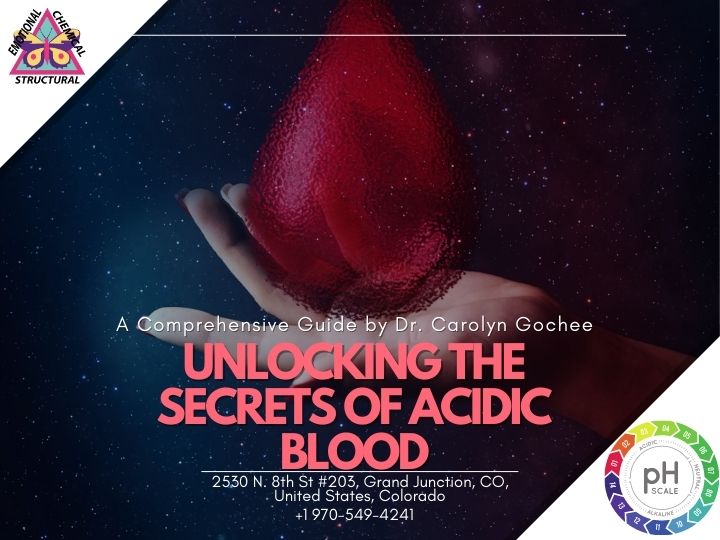What is pH and why does it matter?
Health consequences of acidic blood
How to balance your pH levels naturally
Diet and lifestyle changes to prevent acidic blood
Supplements and alternative therapies for acidic blood
Medical treatment options for acidic blood
What is pH and why does it matter?
pH is a measure of the acidity or alkalinity of a substance. It ranges from 0 to 14, with 0 being the most acidic, 7 being neutral, and 14 being the most alkaline. In the human body, pH levels play a critical role in maintaining optimal health. Our blood, for instance, needs to be slightly alkaline, with a pH range of 7.35 to 7.45, for our cells to function properly. When the pH of our blood drops below this range, we experience a condition known as acidic blood, which can have serious health consequences.
The pH of our blood is regulated by several physiological processes, including the kidneys, lungs, and the body’s buffering system. However, certain factors can disrupt this delicate balance and lead to acidic blood. These include a poor diet, high-stress levels, lack of exercise, and certain medical conditions such as diabetes and kidney disease.
To maintain optimal health, it’s important to understand the causes and symptoms of acidic blood and take steps to restore the pH balance of our blood.
Causes of Acidic Blood

Acidic blood can be caused by several factors, including
Poor Diet
The foods we eat can have a significant impact on the pH of our blood. A diet high in acid-forming foods such as processed foods, sugar, dairy, meat, and grains can lead to acidic blood. On the other hand, a diet rich in alkaline-forming foods such as fruits, vegetables, and healthy fats can help maintain a healthy pH balance.
High-Stress Levels
Stress can also contribute to acidic blood. When we’re stressed, our body produces cortisol, a hormone that can disrupt the pH balance of our blood. Managing stress through practices such as meditation, yoga, and deep breathing can help keep our pH levels in check.
Lack of Exercise
Regular exercise is essential for maintaining optimal health, including a healthy pH balance. Exercise helps improve circulation, increases oxygen levels in the blood, and stimulates the body’s natural detoxification processes.
Medical Conditions
Certain medical conditions such as diabetes and kidney disease can also lead to acidic blood. These conditions can cause an accumulation of acidic waste products in the body, which can disrupt the pH balance of our blood.
Symptoms of acidic blood
Acidic blood can cause a range of symptoms, including
Fatigue
When our blood pH levels are too low, our cells are unable to function properly, which can lead to feelings of fatigue and lethargy.
Digestive Issues
Acidic blood can also cause digestive issues such as bloating, gas, and indigestion.
Skin Problems
Acidic blood can cause skin problems such as acne, eczema, and rashes.
Joint Pain
Acidic blood can also cause joint pain and inflammation.
Health consequences of acidic blood
Acidic blood can have serious health consequences if left untreated. It can lead to a range of chronic health conditions, such as
Osteoporosis
Acidic blood can cause the body to leach calcium from the bones, leading to osteoporosis.
Cardiovascular Disease
Acidic blood can also increase the risk of cardiovascular disease by causing inflammation and damage to the arteries.
Kidney Disease
Acidic blood can also lead to kidney disease by causing damage to the kidneys and impairing their ability to function properly.
Cancer
Acidic blood has also been linked to an increased risk of cancer, as cancer cells thrive in an acidic environment.
Testing for acidic blood
Testing for acidic blood is relatively simple and can be done through a blood test. The test measures the pH of your blood and determines whether it’s within the healthy range of 7.35 to 7.45.
How to balance your pH levels naturally

If you have acidic blood, there are several steps you can take to restore the pH balance of your blood naturally. Some of these are:
Alkaline Diet
Eating an alkaline diet rich in fruits, vegetables, and healthy fats can help restore the pH balance of your blood.
Hydration
Staying hydrated by drinking plenty of water can help flush out acidic waste products from the body and restore the pH balance of your blood.
Exercise
Regular exercise helps improve circulation and stimulate the body’s natural detoxification processes, which can help restore the pH balance of your blood.
Stress Management
Managing stress through practices such as meditation, yoga, and deep breathing can help keep your pH levels in check.
Diet and lifestyle changes to prevent acidic blood
While it’s important to take steps to restore the pH balance of your blood if you have acidic blood, it’s also important to make long-term diet and lifestyle changes to prevent acidic blood from occurring in the first place. These are some of the changes you can make to prevent acidic blood:
Eating an Alkaline Diet
Eating an alkaline diet rich in fruits, vegetables, and healthy fats can help prevent acidic blood.
Reducing Stress
Managing stress through practices such as meditation, yoga, and deep breathing can help prevent acidic blood.
Getting Regular Exercise
Regular exercise helps improve circulation and stimulate the body’s natural detoxification processes, which can help prevent acidic blood.
Avoiding Acid-Forming Foods
Avoiding acid-forming foods such as processed foods, sugar, dairy, meat, and grains can also help prevent acidic blood.
Supplements and alternative therapies for acidic blood
In addition to diet and lifestyle changes, certain supplements and alternative therapies can also be helpful for restoring the pH balance of your blood. These include:
Alkalizing Supplements
Supplements such as magnesium, potassium, and calcium can help restore the pH balance of your blood.
Herbal Remedies
Herbs such as dandelion root, burdock root, and milk thistle can also help restore the pH balance of your blood.
Acupuncture
Acupuncture can help restore the pH balance of your blood by stimulating the body’s natural healing processes.
Medical treatment options for acidic blood
If you have severe acidic blood, your doctor may recommend medical treatment options such as
Medications
Medications such as sodium bicarbonate or potassium citrate may be prescribed to help restore the pH balance of your blood.
Dialysis
If you have kidney disease, dialysis may be necessary to remove acidic waste products from your blood and restore the pH balance.
Conclusion and key takeaways
Acidic blood can have serious health consequences if left untreated. It’s important to understand the causes and symptoms of acidic blood and take steps to restore the pH balance of your blood. This can be done through diet and lifestyle changes, supplements and alternative therapies, and in some cases, medical treatment options. By taking a proactive approach to your health and addressing the underlying causes of acidic blood, you can maintain optimal health and prevent chronic health conditions in the future.








0 Comments